Lea Wait's Blog, page 169
March 29, 2019
Weekend Update: March 30-31, 2019
[image error]Next week at Maine Crime Writers, there will be posts by Kaitlyn Dunnett/Kathy Lynn Emerson (Monday), Dick Cass (Tuesday) John Clark (Wednesday) Lea Wait (Thursday), and Bruce Coffin (Friday).
In the news department, here’s what’s happening with some of us who blog regularly at Maine Crime Writers:
On Saturday, April 6 at 1:00 p.m., MCW bloggers Dick Cass, Brenda Buchanan and Sandra Neily will be Making a Mystery with the help of the audience at Boothbay Harbor Memorial Library. This is a free event. All are welcome! https://bbhlibrary.org/4-6-19-mystery-makers/
It’s time to get your tickets for the third annual Maine Crime Writers staged readings at Portland Stage Company. Scenes written by five Maine crime writers–Kate Flora, Dick Cass, Chris Holm, Julia Spencer-Fleming and Gayle Lynds–will be read by Equity and local actors affiliated with Portland Stage Company on Tuesday, April 9 at 7:00 p.m. The actors will bring to life the characters you know and love, then the authors will take the stage for a talkback with the audience. Last year’s event was a blast. This year’s will be, too. Tickets available here: https://portlandstage.secure.force.com/ticket/#/instances/a0Ff100000cxqdaEAA
[image error]
Portland Stage actors doing staged readings of scenes written by Maine Crime Writers in 2018.
An invitation to readers of this blog: Do you have news relating to Maine, Crime, or Writing? We’d love to hear from you. Just comment below to share.
And a reminder: If your library, school, or organization is looking for a speaker, we are often available to talk about the writing process, research, where we get our ideas, and other mysteries of the business. Contact Kate Flora
Math Problem
Dorothy Cannell: I have always thought of myself as having less than mediocre intelligence. At school I was weak on geography, biology and French and was horrible at math (or maths as we called it in England) from long division and multiplication on. Attending a girl’s only school I wasn’t caught in the trap of believing it was a subject where females could not be expected to excel. I had classmates who went Oxford and Cambridge to study it. To my mind this was brainy in the extreme, even as I thought it a fate worse than death. By the way, I don’t know what is meant by pure math. Is there impure math?
There was I lost in a sea of confusion, which around the time of fractions sank me into [image error]indifference. When it came to Geometry I had zero interest in the angle of the hypothesis or whatever it was. As to Algebra I couldn’t imagine why anyone would care if A + B – C – D equaled any letter of the alphabet. As for trigonometry, when posed with the question – if a man was falling off a cliff at a certain angle and speed where would he land – all I could think was if he’s falling to likely death why would he care?
Fortunately by the age of nine I had decided I was going to be an author when I grew up, so I was able view my inferiority, though shameful, as not impairing my ability to earn a living. This view would have been less rosy had I known I would be forty before I sold a book; but my life wasn’t blighted by having to add up and subtract by use of my fingers, and pencil and scratch paper covered with a great deal of crossing out. All I needed were cups of coffee to stimulate my brain. My husband Julian and I often say we married because of our shared love (nutty passion) for books. But a side attraction was his taking his undergraduate degree in accountancy.
He has always handled the business side of things, becoming quite rapturous at tax season. All those exciting forms! Those lovely columns of figures! Needless to say I have never had to balance a checkbook. All that is required of me is that I note and date any checks I write. I even receive praise for doing so, and I float off in a glow of self-congratulation that I can vaguely assess where that leaves our balance. It didn’t take deep thinking to realize why I have no ability or interest in math. It has nothing to do with people, at least not in a way that presents as visible, and it has always been people that has called to me most strongly. To my mind people make the stories of life, from the tragic to the joyous to the mundane. And I particularly love the mundane, because it is the core, the setting for all the bigger stuff – birth, death and the search to make sense of the sometimes overwhelming.
[image error]
Photo by Pixabay on Pexels.com
Considering my view of math it is perhaps surprising that I chose to write mysteries because they have the requirement that ‘things must add up.’ The pieces plucked from the mundane and traumatic must fit. There can be no fudging on the answer to such questions as: if A talked to B about D in the presence of C was D lying when he said he didn’t know A or B? This may fuddle my brain but I want to know the answer. Were A and B endeavoring to rouse C’s suspicions of D, by having C overhear a conversation that destroys D’s Alibi? Or was what they said truthful?
Back to trigonometry and the poor guy falling off the cliff—the angle and speed at which he falls becomes of acute interest to me if he becomes a seemingly harmless Mr. or Miss Jones who had been given a sharp push as he or she stood on the edge admiring the sun’s reflection on the sea below. If the fall is slow and straight there maybe the chance to grab at a rocky protuberance and survive, but if it is far flung and fast the outcome is likely to be death. This brings about the pleasant part of deciding whether Mr. or Miss Jones gets to stay on for the rest of the book. This requires a think not only over a cup of coffee or tea but a slice or cake or at least four biscuits (cookies).
Final reflection. Years ago I was on the last chapter of a book and someone asked me
[image error]
Photo by Magda Ehlers on Pexels.com
how much more I had to go. “Nine pages,” I said. “How do you know?” he asked. “Have you already roughed it out?” “Oh, no!” I replied, “I’ve worked out in my head what’s left to say, added it up and it’s nine pages. I suppose it could be eight, but I don’t think so. I’m not usually wrong about this.” He stared at me in blank admiration. “That’s clever!” he said.
It was a confidence booster. But it didn’t make up for not ever knowing what happens to the remainders in long division. To make excuses if I believe that if it has been a case of 13 teachers taking 147 children on a field trip, with each teacher being responsible for an equal number of children, I would have been deeply concerned for the remainders. How would they fare for themselves? Would they be glad to be unsupervised or panicked? And what if the answer were something like 7 and ¾ children? I think I’d rather plot a murder.
Happy reading,
Dorothy
March 28, 2019
When the Desert Blooms
Kate Flora: Our plans for March in Florida having fallen through, we went west instead. To gray and rainy San Francisco. To the Berkley Hills and views, between rainstorms, of the Golden Gate Bridge. To snowy Tahoe. To warming Los Angeles and bushes vibrant with camellias. To the California Poppy Reserve, to see magical hillsides aglow with poppies, and then on to Palm Springs, where the unusual rains have brought forth an amazing spring bloom in the desert.
Since you didn’t get to come along, here are some pictures instead.
From San Francisco Botanical Gardens in Golden Gate Park



Sunset from the Berkley Hills and a gorgeous magnolia


Around Lake Tahoe
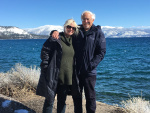
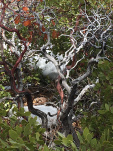
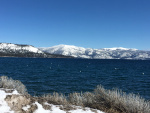
In the Descanso Gardens near Pasadena





Poppies north of Los Angeles:
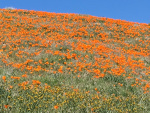

The desert in bloom around Palm Springs:


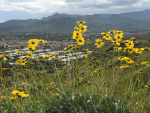
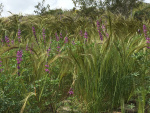

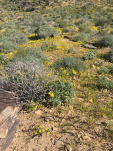
And so you can feel the magic of that poppy field, here is a short video:
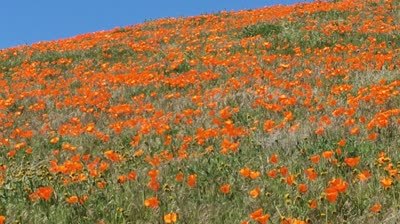
March 26, 2019
Character and Consistency: Most Important Aspects Of Writing A Series.
Vaughn Hardacker here. I’m sitting at my word processor and reflecting on my published work. One thing I noted is that I have the beginnings of multiple series going on. The first is my Bouchard and Houston books, Sniper (2014, Skyhorse Publishing, Inc.) and The Fisherman (2014, Skyhorse Publishing, Inc.) and the second is the Ed Traynor series, Black Orchid (2016, Skyhorse Publishing, Inc.) and My Brother’s Keeper (TBR July 2, 2019, Skyhorse Publishing, Inc.). The first thing that came to my mind was: What was the most difficult thing I faced in writing them?
[image error]
Sniper
The first thing that came to mind was that the characters and how to develop them was the hardest thing in Sniper and Black Orchid. I had to create characters that were not only appropriate to what I was writing but were also interesting enough for the reader to want to spend time with them. I remember being told that you write great villains but your protagonists are only so-so. I was fortunate in that I really write thrillers and not who-done-its so I was able to spend time with my antagonist because the reader already knows who he or she is. However, I wanted to make both as equally interesting as possible. You can imagine my surprise when the most popular character in Sniper turned out to be Jimmy O’Leary (aka Jimmy O), a gangster with ethics intended to be a secondary character. I can honestly say that developing Anne Bouchard and Mike Houston required more work that Jimmy O–he came natural.
[image error]
Black Orchid
I believe that the most important aspect in characters is they must be believable. I am completely turned off when I read about heroes modeled after Jack Armstrong, the All-American Boy. (Jack Armstrong, the All-American Boy was a radio adventure series which maintained its popularity from 1933 to 1951. The program originated at WBBM in Chicago on July 31, 1933, and was later carried on CBS, then NBC and finally ABC. The character was developed by Samuel Chester Gale, Vice-president of Advertising for General Mills–another creation of Sam Gale’s fertile mind was the iconic Betty Crocker.) You know the type: they always get the girl (or guy), excel at everything they attempt. (Think the Great Leslie in the movie The Great Race.) There are a couple of extremely popular authors who I will not read because of thier unbelievable protagonists. One of whom lives in an aircraft hangar filled with antique cars and airplanes, was an All-American quarterback in college, etc, etc and he has been able to support this life-style on a government salary. My heroes are not perfect, they have flaws and my villains have some good aspects to their character (For example: Willard Fischer in The Fisherman a psychopath who cares for his mother who has advanced Alzheimer’s.).
[image error]
My Brothers Keeper: TBR July 2, 2019
I vividly recall what was my greatest challenge in the second book of each series . . . they had to be consistent with their characters in the first book. If your hero dislikes people who abuse animals in book one, they better have the same characteristic in all subsequent books. If your antagonist is a person who kicks puppies . . . well you get the point.
Not only should the character’s personality be consistent their reactions to various situations should also be in line. If your protagonist is a take charge type (which they usually are–nobody expects a hero to vacillate) when there is an emergency he or she must take charge. That is not to say that if you have introduced a minor character flaw in book one that you can’t show improvement in book two. However, you should show the progression, don’t just have the character undergo an instant epiphany–we all know that usually does not happen; true change takes work and time.
Another area that has to be watched is that one doesn’t confuse consistency with continuity. Aren’t they the same thing? The short answer is: no. In my next blog I’ll compare and contrast the two. For now think about the difference in their definitions:
Consistency.
Agreement or logical coherence among things or parts.
Reliability or uniformity off successive results
Conformity with previous attitudes, behavior, and practice
Continuity.
The state or quality of being continuous
An uninterrupted succession or flow; a coherent whole
The property of a continuous and connected period of time
Smooth, without break
DIEING NAKED AND OTHER LESSONS LEARNED ON MY JOURNEY THROUGH THE VALLEY OF GRIEF
A friend dropped by on his way to his in-progress place on the Airline yesterday. While catching up, he commented on the previous generation’s tendency to hoard and how long it takes to go through stuff after they die. That reminded me of the following essay I wrote for Wolf Moon Journal some ten years ago. It’s longer than usual, but worth sharing.
The next time you see a car with the bumper that says “He Who Dies With The Most Toys Wins,” have a tiny bit of compassion for the person who put it there. They probably haven’t lost a loved one yet. My journey through the valley of grief has taken much longer than anticipated. In fact, I’m never certain if I have cleared the other end or if the cliffs are just not as high. It’s not a place where a GPS works. Time does, but not always well.
[image error]
Mom with grandkids Katie and Robbie Lloyd
Consider this. Seven times since Mom died in November 2005, I have sat at this computer and started an essay honoring her memory. Seven times I have written the same line-“My mother was a remarkable woman” and could get no further. That is not to say I haven’t been able to honor her in other ways and other essays, because I have. The valley is a painful, but very instructive place.
When my father died, more than ten years ago, he was living in a four room apartment. Even so, it took all three of his children with help from spouses and significant others nearly a full day to sort, divide and move the accumulation that was his life. We told Mom that when she went, we were going to back a semi up to the house, throw everything in and pay someone to haul it off. We had no clue how prophetic that jest was.
I was working for the state library and was on the road, when I got a message to call one of Mom’s swimming buddies. I realized that a long-dreaded shoe had finally dropped. The caller wanted me to know that the lady who had become friend, fellow AA traveler, parent and listener was no longer. Mom wasn’t dead, but had suffered a serious stroke that for her was worse than death. She made a far better recovery than anyone could have predicted, even coming home and living independently for the next two years, but the two things she valued more than anything-speech and writing, were never the same.
[image error]
Like the family barn, I felt gutted after Mom died
Although it took me a long time to realize it, I entered the valley that afternoon in July of 2005. Because my sister and I knew Mom well and respected her independent spirit, we let her stay at the farm when both we and our immediate family members had plenty of second thoughts and feelings of guilt. I had to remember this was the lady who once had a bumper sticker that proclaimed “A Woman Without A Man, Is Like A Fish Without A Bicycle,” and who adopted a rule for even close friends and relatives; visit for longer than three days and you stay at a motel. Mom loved her friends, but loved her solitude and independence even more.
In order to support that need, I did a giant loop at least twice a week including once almost every weekend; Hartland to Augusta to Union and then back to Hartland. If I was on the road to work with a library, that loop might also include anyplace from Calais to York or Fryeburg. Sometime shortly after I entered the valley, my ability to sit down and let some of the dozens of essays, short stories and novels filling my head come out on my computer started to disappear. Instead of unbroken stretches where I saw the story unfolding in my mind, I had ten minute bursts interspersed with too many cups of coffee and somewhere in the neighborhood of a hundred thousand games of computer mahjong. It was both painful and demoralizing to go from writing a full novel during the depth of winter to getting as far as chapter four and giving up.
Sometime in the fall of 2006, Mom probably had another stroke. The first clue we had was the deterioration of her reading ability. She had been able to keep her spirits high by devouring nearly a book a day. Suddenly, she couldn’t read a chapter without forgetting what happened in the preceding one. That, coupled with her inability to write her column for the Camden Herald, seemed to kill her spark. When I got a call late one October night that she had fallen and was on her way to the emergency room, I spent most of the treacherous drive down foggy Route 7 trying to reach inside and feel something other than numbness.
[image error]
Sennebec Hill Farm lives on with new owners
Mom made enough of a recovery to be transferred to Quarry Hill in Camden, but her long-held wish to go back to Sennebec Hill Farm had been overcome by an acceptance that everything she lived for was now out of reach.
We had our Thanksgiving at Sennebec Hill Farm; me, Beth, our daughters Sara and Lisa, Lisa’s boyfriend Sam, Kate and Ken and their sons Jake and Max. I think everyone was surprised at how warm and comforting it was, given that the lynchpin of the last fifteen Thanksgivings lay in a hospital bed 14 miles away.
The look on Mom’s face when all of her family, except her Florida grandkids came to wish her a happy Thanksgiving was something I’ll remember for a very long time. I suspect our mass visit gave her the strength to allow herself to die.
Three nights later, Kate called from her home in Concord, Mass. “Drop everything and get to Quarry Hill. I just talked to her nurse who said this is really it. I’ll meet you there.” I took off while Beth contacted our daughters. My flight through Waldo County was a surreal recreation of the foggy drive to the emergency room.
I arrived first, then Beth, then Kate, then Lisa and Sam. Sara got lost as she entered Camden and one of the first lessons from the valley came to fruition. The kindness of strangers comes when most needed. A young man overheard Sara’s tearful query in a convenience store, hopped in his car and led her to Quarry Hill.
Kate and I told the others to go home around midnight and settled in. She and I had been here twice before, once with Dad and once with our younger sister, Sara. You may get slightly comfortable with the mechanics of death, but never with the emotional gotchas that come from nowhere, no matter how long you have been anticipating them. Mom died just after 1 A.M.
We left and returned to the farm. Even though it was well past midnight, we called ‘Aunty Marilis’ Mom’s best friend. If anyone in the universe deserved to know, it was she. Kate stayed at the farm and I drove home.
Mom’s memorial service was as good as it could get. I learned in my early AA years that I do best speaking from the heart and not from a sheet of paper. When Kate and I got up to start things off, I saw old friend Paul and realized miracles were still happening. He had been mom’s weeder by proxy when her legs would no longer allow her to get down and tame her garden paths. Paul said it perfectly, “I collect interesting people and Arley was one at the top of my list.” The crowd at the service was smaller than I expected, but that soon became another of the lessons from the valley. When you live a good long life, you outlive most of your friends.
Between December and late summer, Kate and I, with help from family, worked on sorting through the accumulated life of A. Carman Clark as manifested by a houseful of stuff. Boxes and bags and truckloads went north to Hartland and south to Concord. Grandkids were asked what they wanted and things set aside. We very conveniently sidestepped the issue of what to do with Sennebec Hill Farm until I arrived one day and found the front door had been kicked in. Oddly enough, nothing seemed to have been stolen, even though we had numerous piles of rather valuable stuff scattered all over the living room.
That forced Kate and I to make a painful decision. I had spent hundreds of hours bush hogging, woodcutting, killing poison ivy and keeping the fields open, all the time planning on living there some day. The long period of caring for Mom had begun to erode that dream; whoever kicked in the door finished it off. Another lesson and a valuable one from the valley came to me. Places aren’t about buildings or land, they are about who lives there. My long affection for Sennebec Hill Farm was fueled by my growing up there; hunting, exploring the 189 acres, swimming in Sennebec Lake and then always knowing that when I walked in the door, one of my best friends, my mother, would be ready to have a chat that might go anywhere. When Mom died, Sennebec Hill Farm sort of grayed out and became just one more thing I had to worry about.
The cleanup continued and our jest became real. We rented a dumpster and filled it twice. In the process I learned several valuable lessons courtesy of my travel through the valley. First, never try to clean alone, the ghosts and memories that live in objects will overwhelm you after a couple hours. Second, after a while, you reach a saturation point that affects you spiritually. I’ve been entering and winning sweepstakes since I was nine. The process of dealing with all the stuff at the farm darn near killed my hobby. After all, when you bring a truckload of ‘stuff’ home every weekend, how excited can you get by having more ‘stuff’ arrive in the mail? Third, there is a very nice feeling that comes from giving ‘stuff’ to people who have a greater need or interest in it than you do.
Kate and I gave the Vose Library in Union first dibs on any books we didn’t want, both for the collection and to help their book sale. We extended that same courtesy to the Union Historical Society. In addition, several hundred books on gardening, writing and nature were added to the Hartland Public Library. Kate and I learned another valuable lesson as we went through Mom’s books. Your place in the world is framed by your connections with other people. Time after time, we opened a book and discovered a personal note of thanks from the author or a piece of correspondence from them commenting on a shared thought.
We are now halfway through winter and Sennebec Hill Farm will soon become home to people who will build on what they found in my mother’s writing, something that did as much to spark their desire to own it as did the view of Appleton Ridge. I am not losing anything, although you might find that hard to believe. I have 58 years of memories. No property sale can touch those. In fact, I have preserved the hill across from the house as well as Katy Cove, for both play important parts in my novels, starting with Berek discovering his way to an alternate world in The Wizard of Simonton Pond.
The magic has finally returned and I am both writing passionately and entering sweepstakes with enthusiasm again. My journey, though painful has taught me many useful lessons. Be kind to yourself when you enter the valley. Your energy level and interest in things may evade you at the most inopportune times. It’s no big deal. In return, you are going to gain compassion for people who probably annoyed you greatly in the past as you become acutely aware of their pain. More importantly, you’re likely to do a few really dumb things during the journey. Forgive yourself because everyone who cares about you is going to do so.
Look honestly at your ‘stuff.’ How much of your accumulated material possessions do you really care about? A lady I never met personally, but consider a friend said it best; wanting what you have is always better than having what you want. When I die, I want to die naked of stuff. No matter how carefully you live life, you leave things that will be disconcerting and painful for your survivors. Do them a favor and get rid of it. I’ll be leaving the heavy burden of grief. I hope by getting rid of everything else ahead of time, I make my survivors’ journey bearable.
March 25, 2019
Wildlife in Our Own Backyard
It’s no secret that I’m a huge animal lover. Whether it’s cats, dogs, cows, or porcupines (oh, how I love the porcupine – despite unpleasant encounters we’ve had with past pups of mine), my heart goes a little aflutter whenever something fuzzy crosses my path. I never really got that thing that so many women get when someone brings a baby into the room – the yearning in the womb or whatever totally skipped me, for whatever reason. But bring a puppy or a baby cow on the scene, and I’m total mush.
For this reason, one of my favorite things in the world is watching wildlife here at the homestead. To create a more favorable environment for both them and us, I’ve been reading up on how to create a humane habitat for wildlife on your own property and in the community. In doing that, I’ve been doing an assessment of the wildlife we already have here, tracking the birds that come to our feeders and those living in the woods surrounding the house, as well as the larger critters who visit under cover of darkness. I recently purchased a Moultrie Wildlife Camera, and set it up at a station on the other side of our property where I occasionally toss meatier trash from the cat’s and dog’s food (everything else goes in the compost).
Here are a couple of segments from the highlight reel:
The station is set up by an old bench that toppled in the woods and at this point is frozen to the ground. Once I can get it out of there, I’ll do so, since I’m concerned it may prove dangerous for deer running through the area.
As far as other wildlife goes thus far, I’ve pretty much spotted the standards: blue jays, cardinals, chickadees, titmice, mourning doves, nuthatches, crows, and gray and red squirrels. I just put out the first of the nyjer seed for the season’s finches, and since I spotted flies and a few mosquitoes yesterday, will ease back on the other feed I’ve been putting out (mostly black oil sunflower seeds) so that visiting birds will focus more on food sources a bit more nourishing for hatchlings and nestlings.
[image error]
I got a bat house last summer that I never put up, so I’m excited about getting that up and ideally attracting bats who will help to naturally address the rampant mosquito population here, since this area is surrounded on two sides by bogs. I’ve decided to devote a couple of our smaller gardens to butterflies and other insects, and can’t wait to catalog the visitors over the course of the spring and summer.
If you’re interested in learning more about setting up a humane habitat for critters in your own backyard, I’ve found a host of wonderful resources. Here are just a few:
The Humane Gardener: Nurturing a Backyard Habitat for Wildlife, by Nancy Lawson. There’s also a great website with bountiful resources on the subject, at www.humanegardener.com.
Bringing Nature Home: How You Can Sustain Wildlife With Native Plants, by Douglas W. Tallamy
The Wildlife-Friendly Vegetable Gardener: How to Grow Food in Harmony With Nature, by Tammi Hartung
The National Wildlife Federation also has a great section on their website, which you can find here: https://www.nwf.org/sitecore/content/Home/Garden-for-Wildlife/
Happy gardening!
Jen Blood is the USA Today-bestselling author of the Erin Solomon Mysteries and the Flint K-9 Search and Rescue Mysteries. To learn more, visit http://www.jenblood.com.
March 22, 2019
Weekend Update: March 23-24, 2019
[image error]Next week at Maine Crime Writers, there will be posts by Jen Blood (Monday), John Clark (Tuesday) Vaughn Hardacker (Wednesday) Kate Flora (Thursday), and Dorothy Cannell (Friday).
In the news department, here’s what’s happening with some of us who blog regularly at Maine Crime Writers:
An invitation to readers of this blog: Do you have news relating to Maine, Crime, or Writing? We’d love to hear from you. Just comment below to share.
And a reminder: If your library, school, or organization is looking for a speaker, we are often available to talk about the writing process, research, where we get our ideas, and other mysteries of the business. Contact Kate Flora
March 21, 2019
“What IF?”
In this month’s Midwest Book Review one of my Mainely Needlepoint books (THREAD THE HALLS) is reviewed. For an author’s books to be reviewed is not unusual. In this case, however, it was, for two reasons. First, because THREAD THE HALLS was published in the fall of 2017, and reviews are usually of recently published (or about to be published) books. And, second, because the review, of one of my contemporary mysteries, also mentions my historical fiction.[image error]
I’ll admit – I didn’t mind. Especially since the reviewer said my historical fiction was “phenomenal,” a term I’m not used to seeing in book reviews. And, oh yes, I loved it!
The review came the same week my newest historical novel (a mystery) was published: JUSTICE & MERCY. And it made me think about what was important about my past and my newest historical fiction.
There is a major difference between JUSTICE & MERCY and my earlier historicals. In my earlier books I was always very — one might say “extremely” — conscious of getting the historical details correct, from place to clothing to politics to mindsets. In JUSTICE & MERCY I did something else. I took a place and a time and a mindset and wondered “what if” something else had happened there.
Don’t get me wrong: I did a lot of research for JUSTICE & MERCY, including visiting the area of New York, next to the Erie Canal, where it is set, studying the laws of the period, and reading local newspapers to find out how the end of the Civil War and the assassination of Lincoln affected that area.
[image error]JUSTICE & MERCY is set in the “burned-over district” of New York State. It was an area where social and religious activists and utopians were part of the culture: a fascinating mixture of radical communal religious communities, anti-slavery groups, women’s rights organizations, and others. (To detail them would take a very long blog post!)
In the pre-Civil War years anti-slavery groups set up underground railroad routes starting in Ohio and leading north to the Erie Canal, and then north and west to Canada.
In JUSTICE & MERCY my “what if?” is whether, after the men went to war, the women they left behind re-invented the established underground railroad routes to help abused women and children escape their homes. In New York State at that time it was a felony to help a woman leave her husband, no matter the circumstances.
So — my latest historical fiction includes more fiction than my usual work.
But — “what if?”
March 19, 2019
More Magic, More Empthy, More Urgency
[image error]What if nature-based fiction works better than most any science course we ever took? What if it delivers more magic, more empathy, more urgency, and more wisdom than a cross-section or diagram ever could?
When authors use the natural world to illuminate what is most human and inhuman about our species, they also take us on field trips we need to take.
When I travel to speak about my work, I also bring along a handout on nature based fiction that shares this wealth.
Here’s some of what I share. There’s more on my website. https://www.authorsandraneily.com/naturebased-fiction/
[image error]“Deep in the forest a call was sounding, and as often as he heard this call, mysteriously thrilling and luring, he felt compelled to turn his back upon the fire and the beaten earth around it, and to plunge into the forest, and on and on, he knew not where or why; nor did he wonder where or why, the call sounding imperiously, deep in the forest.” Jack London, The Call of the Wild
[image error]“The sigh of all the seas breaking in measure round the isles soothed them; the night wrapped them; nothing broke their sleep, until, the birds beginning and the dawn weaving their thin voices in to its whiteness.” Virginia Woolf, To the Lighthouse
“The clouds were building up now for the trade wind and he looked ahead and saw a flight of wild ducks etching themselves against the sky over the water, then blurring, then etching again and he knew no man was ever alone on the sea.” Ernest Hemingway, The Old Man and the Sea[image error]
“As I looked about me I felt that the grass was the country, as the water is the sea. The red of the grass made all the great prairie the colour of wine stains, or of certain seaweeds when they are first washed up. And there was so much motion in it; the whole country seemed, somehow, to be running.” Willa Cather, My Ántonia
[image error]
Jackie helps me release trout.
“When he says ‘Skins or blankets?’ it will take you a moment to realized that he’s asking which you want to sleep under. And in your hesitation he’ll decide that he wants to see your skin wrapped in the big black moose hide. He carried it, he’ll say, soaking wet and heavier than a dead man, across the tundra for two—was it hours or days or weeks? … It’s December, and your skin is never really warm, so you will pull the bulk of it around you and pose for him, pose for his camera, without having to narrate this moose’s death.” Pam Houston, Cowboys Are My Weakness
“I wasn’t really breaking the law. Maine’s a practical state. My ancestors knew they couldn’t slap a deed on something that slithers through fingers, so they made rivers and trout public property and left it vague how we’d get to them. … Behind Carla Monson’s gate, spawning trout had to be flinging themselves upstream under fall leaves as orange as their cold, swollen bellies. They were my kind of invitation.” Sandra Neily, Deadly Trespass
Reading Suggestions (Reviews are in quotes. My personal notes are not.)
Heat and Light, Jennifer Haigh. “… when an author can tell a beautiful and compelling story about fracking, well, you know you are in the presence of something special.”[image error]
Breaking Point, C.J. Box. Two EPA employees are murdered. Wyoming game warden Joe Pickett thinks it might be Butch Roberson whose dreams of retirement income are shredded when the EPA declares his lands a wetland.
Winter Study, Nevada Barr. “Soon after Anna Pigeon joins the famed wolf study team of Isle Royale National Park in the middle of Lake Superior, the wolf packs begin to be[image error]have in peculiar ways.” All of her mysteries are set in vivid and various National Parks. All rip nature onto the page.
Skinny Dip, Carl Hiaasen. “…is about “a young, handsome marine biologist whose expertise is marginal and a crooked farm tycoon who owns large vegetable fields which he relentlessly pollutes with fertilizer run-off.” Hiaasen’s best-selling satires pit Florida’s outdoors against relentless stupidity.
The Secret Wisdom of the Earth, Christopher Scotton. “The events of this fateful summer will affect the entire town of Medgar, Kentucky, beset by a massive mountaintop removal operation that is blowing up the hills and back filling the hollows.” NY Times raves: “a page turner.”
A Night Too Dark, Dana Stabenow. Alaska’s many natural resources provide conflict in most all her novels from mineral wars to fishing turf battles, to big oil up against native tribes. “Her over 17 novels about the Aleut PI Kate Shugak are an outstanding series. She’s 5 foot 1 inch tall, carries a scar that runs from ear to ear, owns a wolf/husky dog named Mutt and tries to survive the worst Alaskan wilds throw at her.”[image error]
[image error]The Monkey Wrench Gang, Edward Abbey. In it, Hayduke says “No one knows precisely how sentient is a pinyon pine, for example, or to what degree such woody organisms can feel pain or fear, and in any case the road builders had more important things to worry about, but this much is clearly established as scientific face: a living tree, once uprooted, takes many days to wholly die.”( In my novel, Deadly Trespass Patton says it’s, a “classic hymn to lawbreaking on behalf of the natural world.”)
And more: The Overstory, Richard Powers * Where the Crawdads Sing, Delia Owens * Bearskin: A Novel, James A McLaughlin * Barkskins, Annie Prouix * Flight Behavior, Barbara Kingsolver * The Country of the Pointed Firs and Other Stories, Sarah Orne Jewett * Watership Down, Richard Adams * The Beans of Egypt Maine, Carolyn Chute * The Weight of Winter, Cathie Pelletier * Massacre Pond, Paul Doiron * The Great Alone, Kristin Hannah
Sandy’s novel, “Deadly Trespass, A Mystery in Maine,” won a Mystery Writers of America award and was a finalist in the Women’s Fiction Writers Association “Rising Star” contest. Last year, she was nominated for a Maine Literary Award. Find her novel at all Shermans Books and on Amazon . Find more info on the video trailer and Sandy’s website. The second Mystery in Maine, “Deadly Turn,” will be published in 2019.
HAPPY VERNAL EQUINOX
Susan Vaughan here. Happy spring to everyone, although here in Maine true spring won’t show up for a month or more. Nevertheless, March 20, 2019 is the spring, or vernal, equinox in the northern hemisphere. As dawn is the time of new light, the vernal equinox is the start of new life.
[image error]
It brings days and nights in equal proportions of daylight and nighttime. But did you know this is true only on the equator? For the rest of us, the proportion of daylight to night time varies, depending on where we are on the planet. In some cases, the date varies as well. As a date, the spring equinox has changed. Calendars created by ancient leaders, such as Julius Caesar and Pope Gregory XIII, and ancient peoples, such as the Maya, were imperfect for astronomical reasons. The date would remain the same every year if the earth’s journey around the sun took exactly 365 days, but it doesn’t, the same reason we have a leap year every four years.
The spring equinox has been an important cultural event for thousands of years. The Maya [image error]of Central America celebrated it. In what is now Mexico, the celebrated the arrival of spring (and the autumnal equinox as well) at Chichén Itzá. The pyramid of El Castillo (the Castle) was built to honor the god Kukulkán, the feathered serpent. When the sun sets on the day of the equinox, a play of light and shadow creates the appearance of a snake undulating down the pyramid’s staircase. To this day, thousands of people gather to observe this phenomenon, an effect which appears to have been deliberately created by the pyramid’s designers. In this picture, beside my husband and me, are giant snake heads, where the end of the light-and-shadow snake ends. The Maya were master builders and knew the power of mythic belief.
The Anglo-Saxon festival of Ostara celebrated the horned god and the spring maiden, both[image error] representing the arrival of spring. Some symbols of this ritual include eggs and rabbits, which spread to a Saxon festival honoring the dawn goddess Oester, from which are derived the words East and Easter. The date of the March equinox plays a major role in calculating the dates for observing the Jewish Passover and Christian Easter.
The ancient Chinese had a tradition for the spring equinox. One balanced eggs, a symbol of fertility, to bring good luck and prosperity. This custom has brought about a modern myth, that the spring equinox is the only day of the year when an egg can be balanced on its end. The truth is that you can balance an egg on any day.
[image error]
In many traditions, spring equinox is the start of the new year. The Roman year began on the Ides of March, the fifteenth. The astrological year begins then when the moon moves into the first sign of the Zodiac, Aries. The Greek god Ares is equivalent to the Roman god Mars, for whom the month of March is named.
MORE FUN FACTS:
The spring equinox can occur on March 19, 20, or 21.
Equinox is Latin for equal nights.
Fred Rogers was born on March 20, 1928
Harriet Beecher Stowe published Uncle Tom’s Cabin on March 20, 1852.
March 20 is also the International Day of Happiness, adopted by the UN in 2012.
UN French Language Day is celebrated on March 20. The other five official UN languages are celebrated on other dates.
Thanks to Time and Date [www.timeanddate.com] for some of the above information.
Lea Wait's Blog
- Lea Wait's profile
- 506 followers



